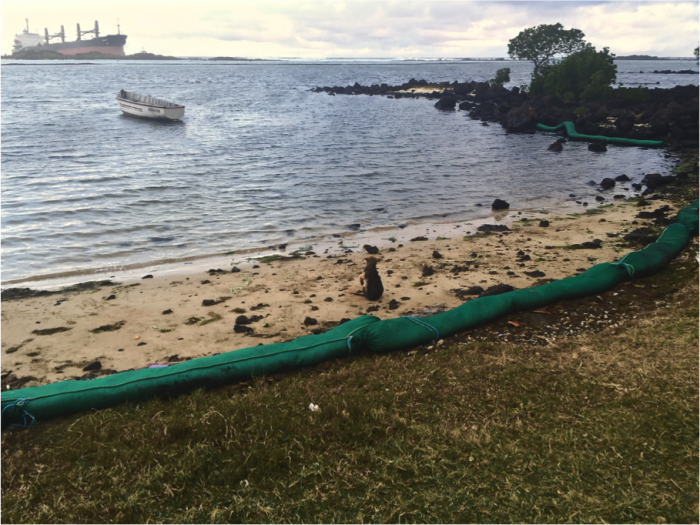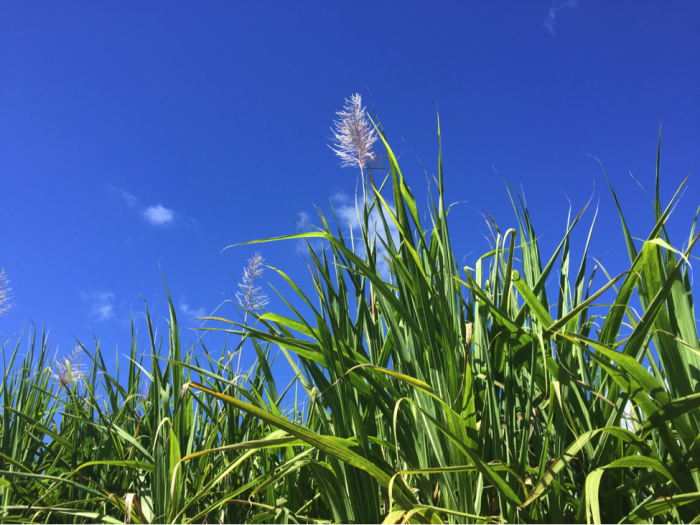“I went there. You don’t want to go, trust me. You can’t breathe. [There’s a] heavy smell of petrol in the air that can’t be good.”
In the early morning hours of 21 June 2016, disaster struck just off the shoreline of the Indian Ocean island nation of Mauritius. MV Benita, a Liberian bulk carrier en route to southern India, ran aground on a sandy atoll just shy of the village of Le Bouchon on the island’s southeast shore.[1] For a small island developing state such as Mauritius, any sort of large-scale environmental event becomes cause for alarm. The scale of ecological destruction and the fallout of MV Benita were catastrophic.

Crowds flocked to the seaside to gape at the spectacle, milling around as the freighter spilled tons of heavy fuel oil into the ocean. Several onlookers remarked that the lagoon would take months, if not years, to recover from the oil slick now lapping the beach. Some pointed to the havoc it would wreak on the surrounding coral, as well vulnerable marine and terrestrial life. Others made the disturbing connection to a new offshore oil refinery project proposed on the west coast. If the MV Benita left its greasy trace along the shoreline of Le Bouchon, its physiological one certainly concretized environmental consciousness in the minds of many Mauritians.

For a country caught in wider debates over climate change and environmental protections (see Gray and Lalljee 2012), MV Benita came to symbolize the real and palpable danger of petrochemicals. As a result, Mauritians have increasingly turned to their government to demand more rigorous environmental controls throughout all administrative departments, including the Ministry of Public Utilities and Energy.
Fueling the Future
Precisely at a moment when local energy politics was coming to the fore, Mauritius found itself at a crossroads. Despite the resistance to and of petrochemicals, the case for energy renewables was not a straightforward one. Rather, I argue in my dissertation that because of the island’s particular history and economic geography, what counts as sustainable energy is a matter of perception. Stated differently, local energy from biomass is often seen as not “green” enough—that is, compared to other energy sources, such as solar, wave, or wind. In Mauritius, context matters.

Renewable Is Renewable Is Renewable
Although there is an abundant supply of local biomass in the form of sugarcane and its discards on the island, Mauritius’s colonial past entangles sugarcane with the twinned history of slavery and indentured labor has greatly shaped perceptions of what gets to count as a sustainable energy feedstock (Galloway 2005). For many local labor activists and environmentalists, sugarcane’s dirty past has challenged its treatment as an ecological, socially sustainable source of power.
Like several other African countries, Mauritius has long used biomass for heat and energy consumption (Grove 1995; Storey 1997). Born out of the sugar industry, cane biomass in the form of bagasse and molasses had been traditionally used as a fuel source in Mauritian sugar mills—over time, this fuel economy was eventually reformed with the addition of coal. Originally, the mills were designed for cogeneration for internal consumption, but in 1984, the sugar estate of FUEL became the first Independent Power Producer (IPP) to export electricity to the nationalized grid (GoM 2006); at present, 66 percent of the country’s entire energy mix comes from combination of bagasse and coal combustion from the country’s four main IPPs.
For these local energy producers, using sugarcane for biofuel production held several advantages. Chiefly, the sheer quantity and availability of the crop and its discards make it an appealing feedstock—approximately 51,477 hectares of land produce roughly 386,277 tons of sugar per annum (Statistics of Mauritius 2017). The next advantage is sugarcane’s historical and scientific import. Since its introduction by the Dutch in 1639, growing sugarcane in Mauritius has also meant producing agricultural knowledge. This is evident in the ongoing cultivation of a local, sophisticated community of agronomists, biotechnologists, and chemical engineers (Storey 1997). Indeed, some of the new advances taking place in Mauritius are the development of advanced biofuels, such as bioethanol from molasses, as well as a new carbon burnout (or recuperation) chamber.
Compromises and Contestations
As noted above, while these initiatives have been heralded as a move toward a greener, circular energy economy—through the consumption of sugarcane discards already amassed—they are not without conflict. In particular, the sugar industry’s shift from a sugar processor to a whole cane processor has left a bitter taste in the mouths of many syndicalists and local smallholder farmers who see this shift as a continuation of land control and labor issues manifested at a large scale. More, what is often excluded from the calculus, is the unaccounted for labor and agricultural knowledge acquired from colonial slaves and, later, indentured laborers charged with the caring of cane. To redress these historical wrongs, several syndicalists and energy activists have aimed to decouple renewable energy feedstocks from any association with the prior colonial context and the control of former sugar barons—some of the same families who presently head the sugar mills-turned-energy-IPPs.
Is all Biomass Bad News in Mauritius?
The question remains: if sugarcane biomass cannot be seen as a viable, socially sustainable energy source, what of the other local biomass contenders, including Arundo Donax, miscanthus, or coastally farmed algae?
Several ideological divisions currently unfolding in the Mauritian energy landscape are attempting to address this very question. Some groups, including the local environmental/labor political party, do not support the continued use of biofuels as a truly sustainable energy feedstock—their focus instead lies in environmental justice via solar energy cooperatives, particularly those invested in photovoltaic technology. Other environmental groups and NGOs have noted that photovoltaic panels are cost prohibitive and therefore unattainable for the majority of Mauritians. Rather, one NGO in particular has argued that biofuels can serve as an important transitory fuel source that supports smallholder farmer livelihoods—and their knowledge—as well as responsibly utilizing plant discards for energy consumption. Further still, agronomists and chemical engineers at the University of Mauritius have been exploring the development of advanced biofuels, including those from algae, as a possible third option.
Regardless of which perspective is adhered to, context and perceptions of what gets to count as sustainable matters. At present, these discussions are still playing out as Mauritius comes to grips with its energy future—as it stands, public opinion is still out on the matter.
Jessica Caporusso is a PhD candidate in the program of Social Anthropology at York University, Canada. Her dissertation explores the cultural politics of the environment and emerging bioeconomies in the Global South. Jessica is supported by scholarships from the Social Science and Humanities Research Council of Canada (SSHRC CGS-D) and by the Ontario Government (OGS).
Note
[1] MV Benita is not the first ship to run aground in Mauritian coastal waters, and it most certainly won’t be the last. Coral reefs largely encircle Mauritius, creating both the island’s famed lagoons and treacherous conditions for seafaring vessels that venture too close to shore. A notable example is the 1902 wreck of the Dalbair, which is still visible in the island’s southwest.
References
Galloway, J.H. 2005. The Sugar Cane Industry: An Historical Geography from its Origins to 1914. 1st ed. New York: Cambridge University Press.
Gray, Matthew, and Bhanooduth Lalljee. 2012. “Climate Change Adaptation in Mauritius: Considering the Role of Institutions.” Western Indian Ocean Journal of Marine Science 11 (1): 99–111.
Grove, Richard. 1995. Green Imperialism: Colonial Expansion, Tropical Island Edens and the Origins of Environmentalism 1600–1860. Cambridge: Cambridge University Press.
Statistics Mauritius. 2017. “Agricultural and Fish Production:Year 2016.” http://statsmauritius.govmu.org/English/Publications/Pages/Agri_and_Fish_Prod_Yr2016.aspx.
Storey, William K. 1997. Science and Power in Colonial Mauritius. 1st ed. Rochester, NY: University of Rochester Press.
Cite as: Caporusso, Jessica. 2017. “Mauritian Energyscapes: Compromise and Contestation.” EnvirSociety, 3 May. www.envirosociety.org/2017/05/mauritian-energyscapes-compromise-and-contestation.
